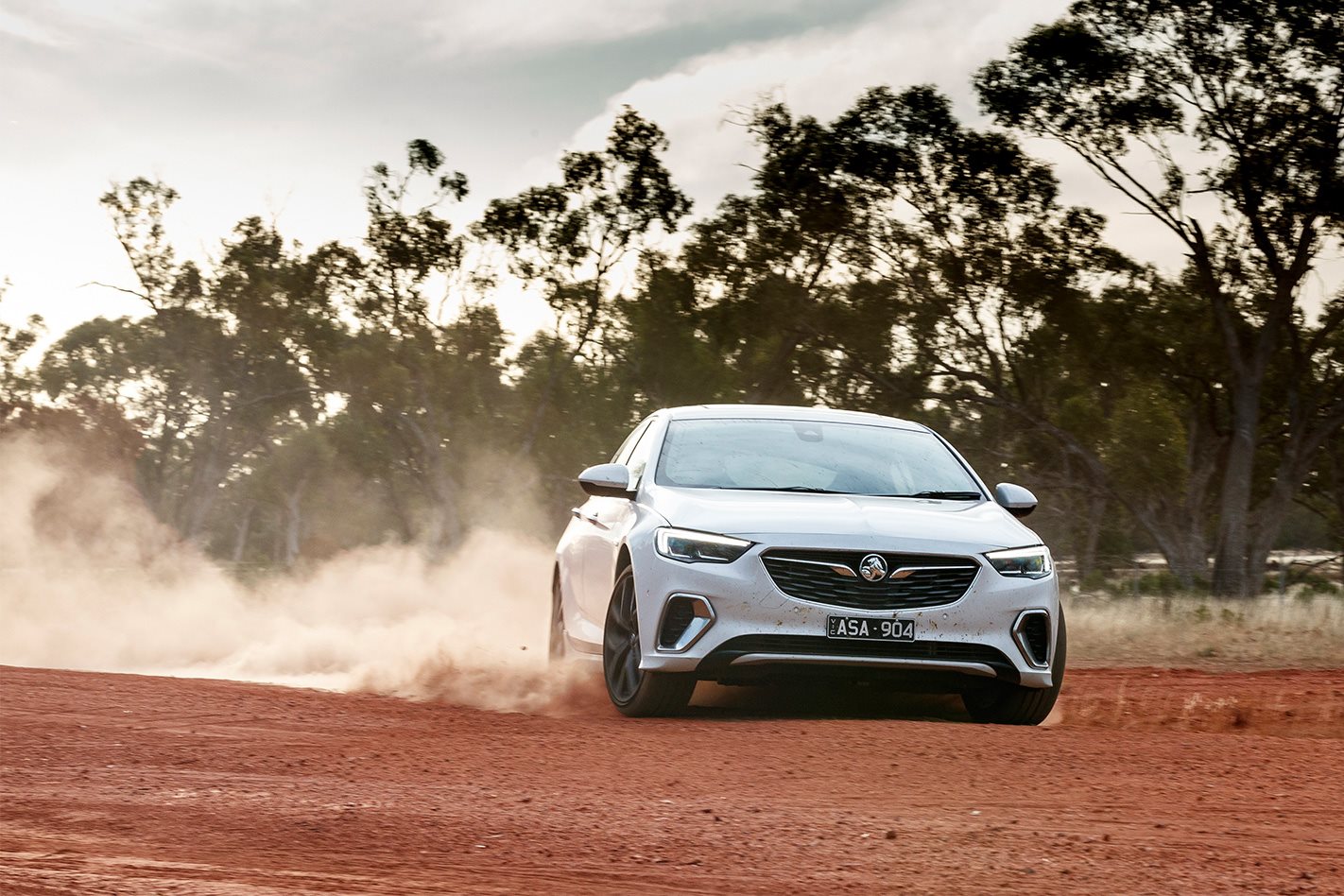IT’S EASY to be cynical about the latest ZB Holden Commodore.
We read your comments on social media, on email and on the Wheels website and the message is clear. You’re going to take a lot of convincing that the ZB Commodore is anything but an Opel Insignia wearing different badges.
You’ll be able to gain a little more perspective on that in the forthcoming issue of Wheels, where we get a rare opportunity to drive both the Opel and Holden specification cars and, without issuing too much in the way of spoilers, the difference is a real eye-opener. So just bench the salty barbs for a moment and give these gents the opportunity to state their case.
The Australianisation process the ZB Commodore has undergone is real and it touches virtually every dynamic aspect of the car. Initial concept, design, ride, handling, sound, powertrain response and the final finessing of range development, pricing and promo all bear a significant imprimatur of Straya about them. So here are some of the key players to explain that process.
Richard Ferlazzo – Design
GM Australia’s Design Director doesn’t pull any punches when he describing the design process of the ZB Commodore. “The home room for the vehicle was the Opel studio in Russelsheim,” he says unequivocally. “Nevertheless, being a global project, we are one of the main customers for this vehicle, so your voice is heard. It’s a collaborative process.” He then pauses and makes probably the most telling comment. “If we’d done it ourselves, it would have evolved into something like this, regardless.”
Let that one sink in for a bit. Even if Australian local manufacturing was still going, this – or something very similar – would have been the layout of your 2018 Commodore. And if recent GM comments are to be believed, there was a very real chance that this car would have been built in Elizabeth.

At this point he pulls out a dimensional overlay and starts rat-a-tatting the differences between the ZB and the VF. He’s clearly enthusiastic about the packaging of the latest car. “It’s very, very similar. The wheelbase is a bit shorter because it’s a front-wheel drive platform. We’ve aligned the hip-point for the front occupant as a datum point which is a pretty cool packaging thing for us. The couple distance – from front to rear occupant hip point to hip point.”
I ask how the internal packaging can be the same despite a shorter wheelbase. “The ball of foot to front wheel [distance] is different,” he explains, basically highlighting how the transverse engine of the ZB allows the driver to sit further forward in relation to the front wheel. Ferlazzo’s not finished. “The front passenger space is virtually identical to VF,” he explains.
“The 36mm of width has been taken out of centre console, but the seat size and elbow room is identical. We haven’t compromised on interior storage either, because the centre bins are so much deeper,” he continues. “Diagonal headroom – and that’s a very important number because it’s the perception of space, whether the front pillar is crowding you, is identical to VF. Front headroom [on ZB] is actually more,” he notes.
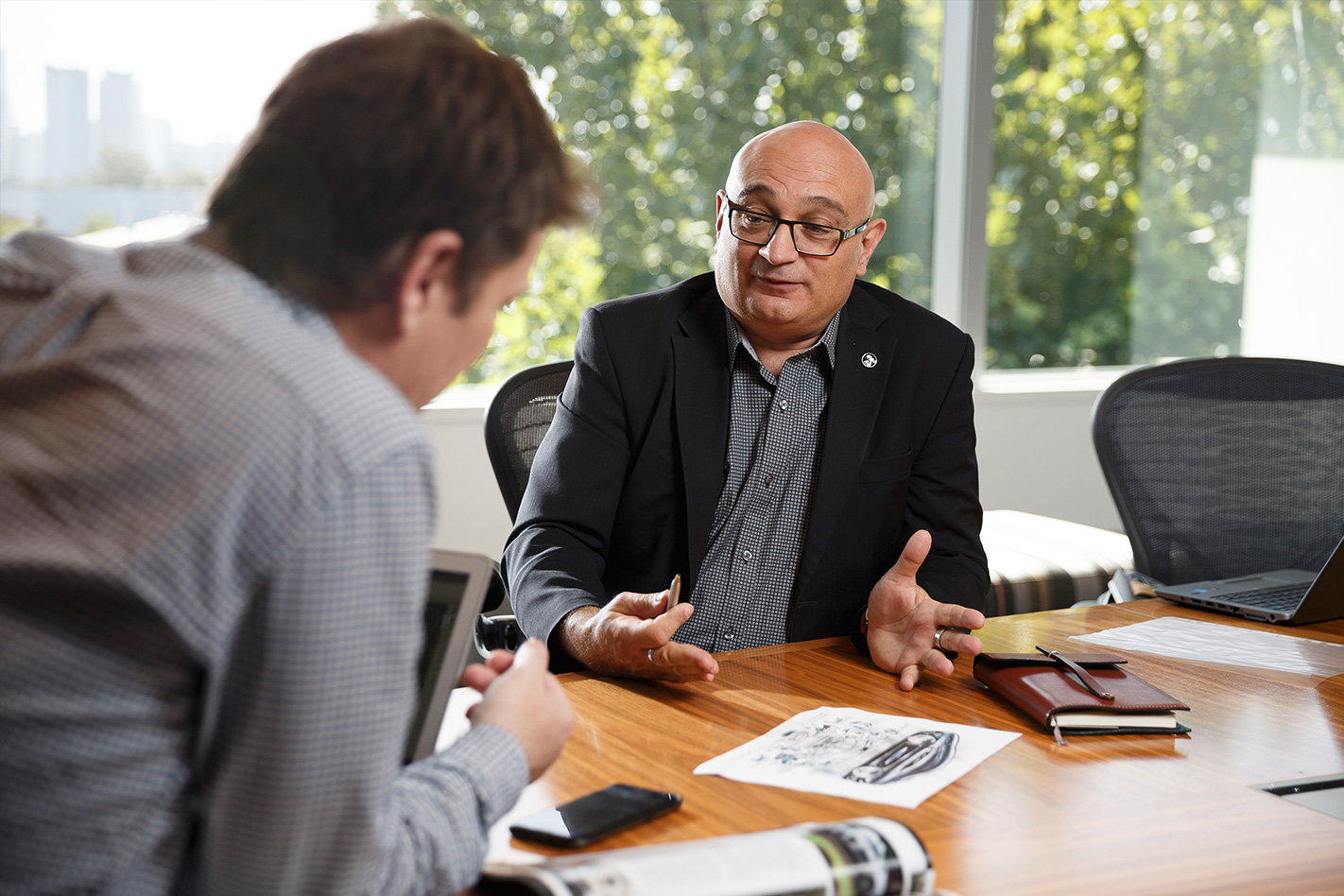
“We ran a tracer model where, which is a full-sized clay model replicating the clay model in Opel’s studio, and we were checking for our requirements. There were certain requirements that we had, such as approach angles in particular. German roads are a bit better than ours, so we had a minimum height. They wanted lower, so we came to a compromise,” he smiles. It was clearly a hard-won compromise.
He’s happy with the result though. “I like to say that this car hits the sweet spot between the VT and the VE; the definitive Commodores of the modern era,” he says. What’s more, things are anything but winding down for his department. “I have 150 people in my staff. If anything, that’ll probably grow,” he says proudly.
“We’re one of GM’s global design studios. We’ve been doing this a long time. With Opel going, ours is now the oldest studio outside of North America. There’s a sister studio in South Korea and three studios in China. Our design department is responsible for three streams of business: we continue to design production cars for all of General Motors, including Holden.
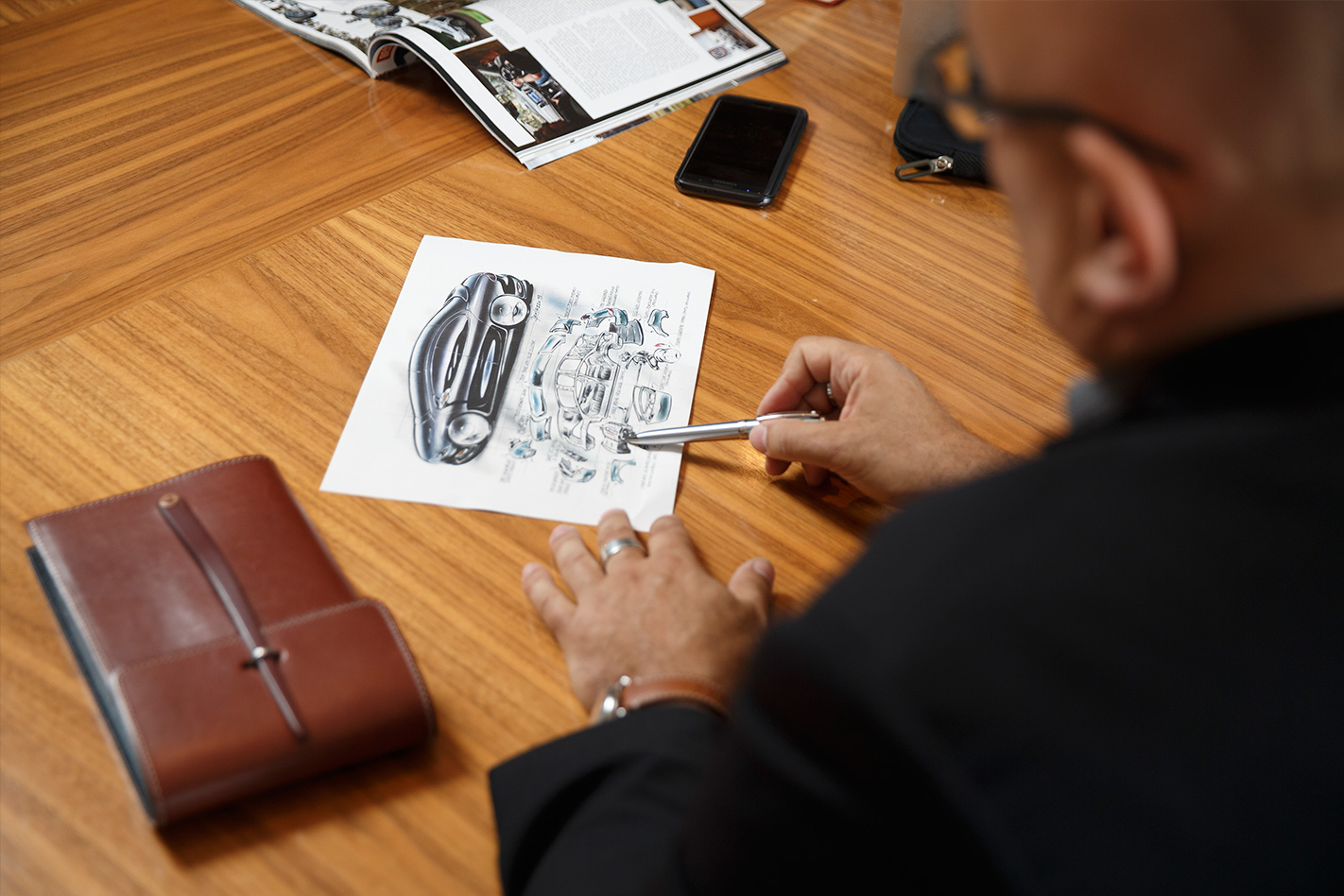
In other words, don’t expect a fire sale of the design assets anytime soon.
Spend any time with Ferlazzo and you soon start diverging off onto fascinating tangents. When asked whether he felt the liftback ZB would now cannibalise the chances of its wagon sibling, he lifts the lid on an old VE project.
“When we did VE we actually built a model of a VE hatchback and cliniced it because we were tossing around different vehicle architectures, and it actually cliniced quite favourably. Had about a 50:50 split where people were favouring the hatch over the sedan,” he smiles. “It was more expensive to do at the time and because we had the Sportwagon coming, we had to settle on one body. The Sportwagon was a hugely successful thing. As sales of Commodore declined, the proportion of wagon sales actually increased. What enabled that was that previously we used to use the long wheelbase for the wagon, and they looked a bit like a hearse.
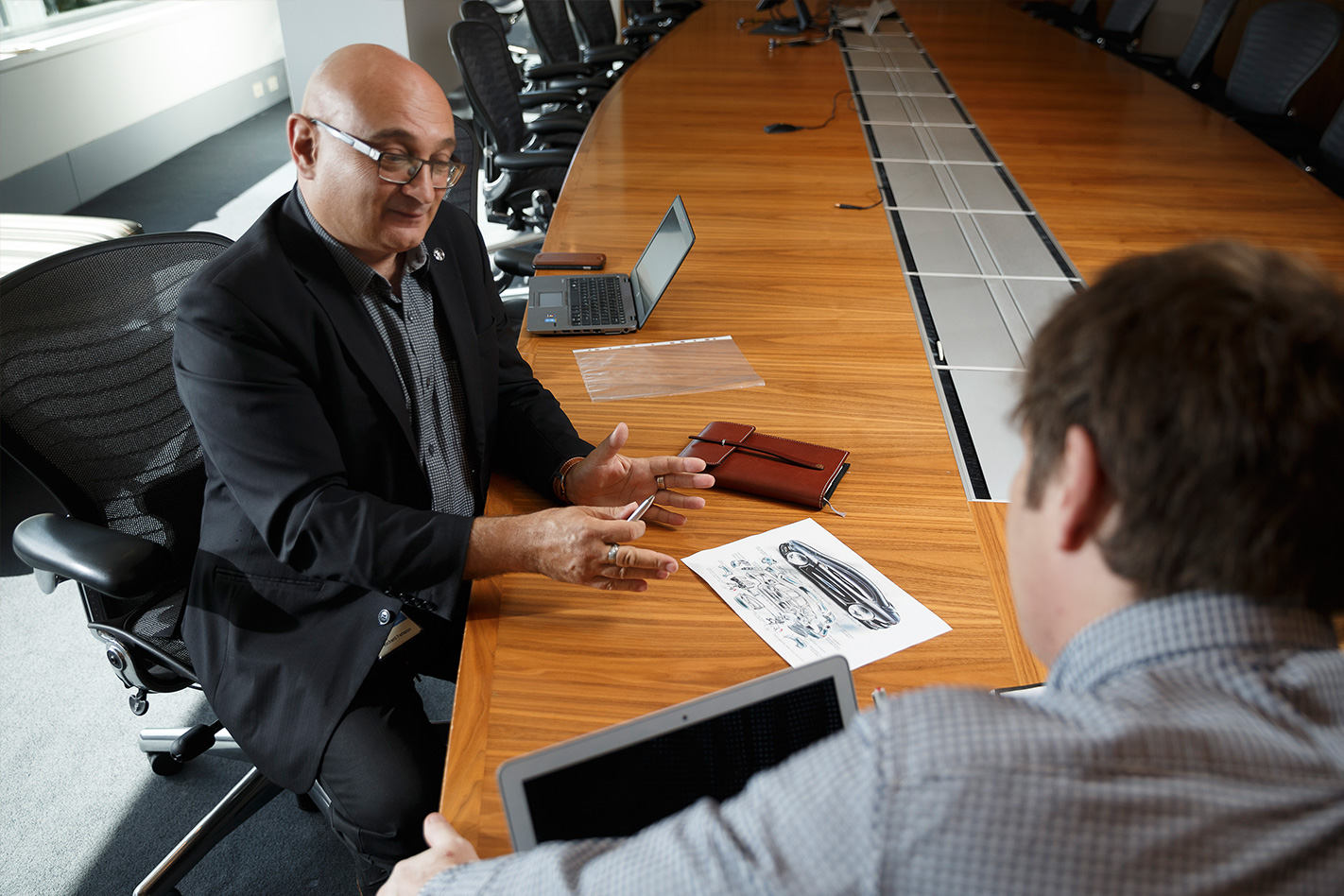
All too soon, we’re being given the nod that our time is up. It’s clear that GM Design Australia doesn’t feel it’s been handed a pup with the latest car. That’s a good initial omen.
Dave Johnson and Jeremy Tassone – Vehicle development
Such were the length of the planning and development schedules around the ZB Commodore that the car was decided on before it was known where it was going to be built. Vehicle development manager Jeremy Tassone takes up the story:
“Around six years ago, or even earlier, we asked what we’d replace the Zeta [platform] Commodore with. We weren’t even aware of where it would be manufactured. Right back then we went through six different scenarios of what the vehicle might have been. It was narrowed down to three options and quickly from there we knew it was going to be based on the Epsilon II architecture: the Opel version,” he says.
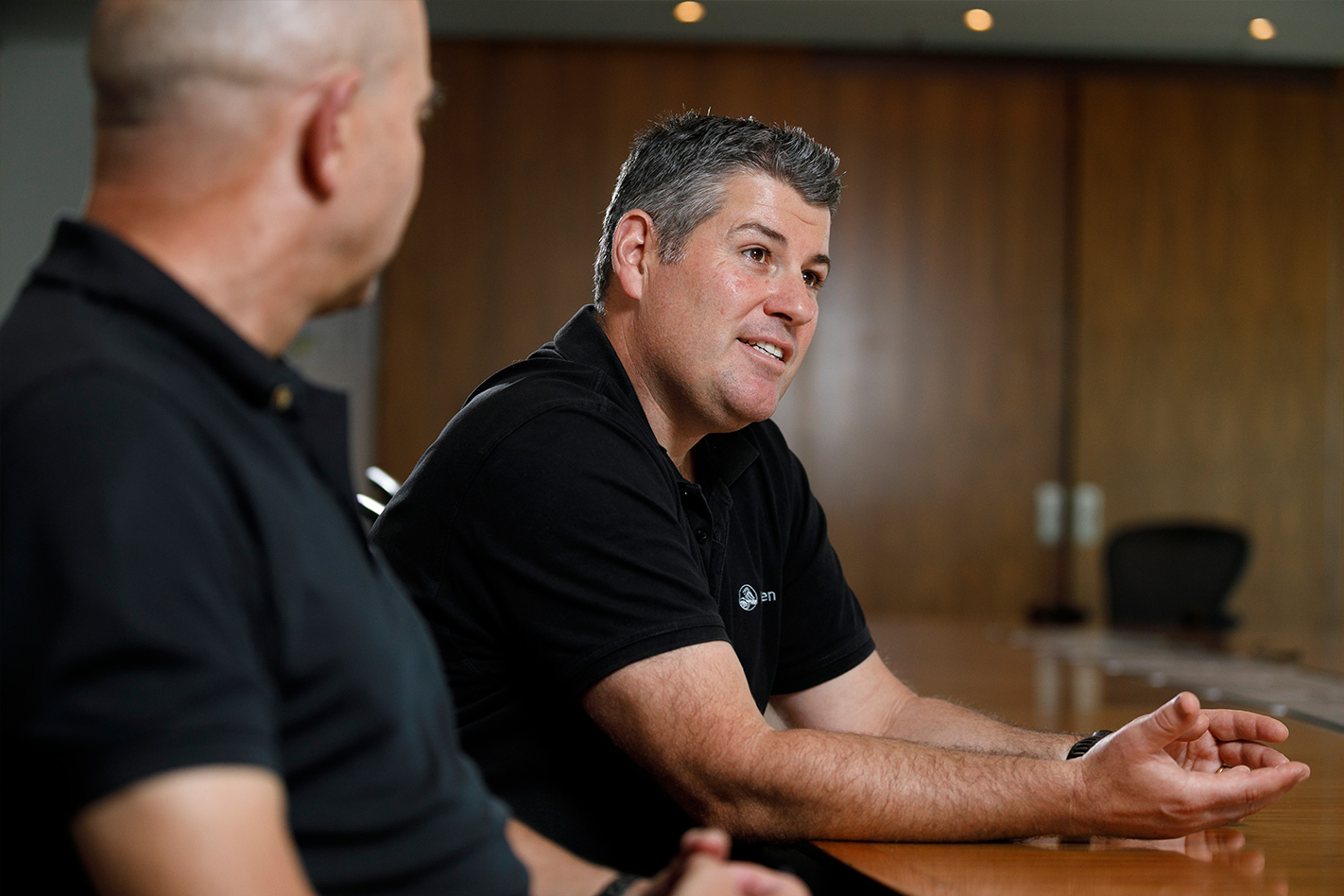
Lead development engineer Dave Johnson weighs in. “Once we got the physical cars here, there are two big pieces of engineering work done here; the chassis tune that Rob Trubiani did, and a fair bit of verification work.” That work was undertaken at Lang Lang and on local test loops.
Before any of that happened, the dev team had to fight for what they wanted. Germany and Australia, they discovered, didn’t always have corresponding requirements. “It was important for us to have a large, naturally-aspirated engine for this car and we wanted the all-wheel drive system and the nine-speed auto. It’s a big thing to add powertrain content to a vehicle,” says Tassone.
“Once we’d shown the performance we’d get out of the V6, Buick said that it really suited them for their flagship as well. They were going to go ahead with the four-cylinder but then they decided that if it was available, the V6 met their requirements too.” Getting Buick onside was key to getting the six-pot over the line. Australia’s demand alone wasn’t enough on that count.

“Yes, the Europeans are really good at ice and at dry bitumen,” continues Tassone. “There’s a whole area in the middle that’s less critical for them. We’re not encouraging people to go rally driving, but here in Australia, you’ll come round a corner and find gravel litter in the road. The way the Europeans tune it, they let it get loose and then grab it. We prefer a more linear tune.”
Tassone feels that the damper tuning and steering recalibration were the Aussie team’s biggest achievements. “As a result, it’s an easy car to drive quite swiftly. Transmission calibration, noise and vibration that we’ve worked on, the tech we’ve worked on – it’s not in your face and makes the car easier to live with,” he says.
The transmission was initially a source of some consternation.
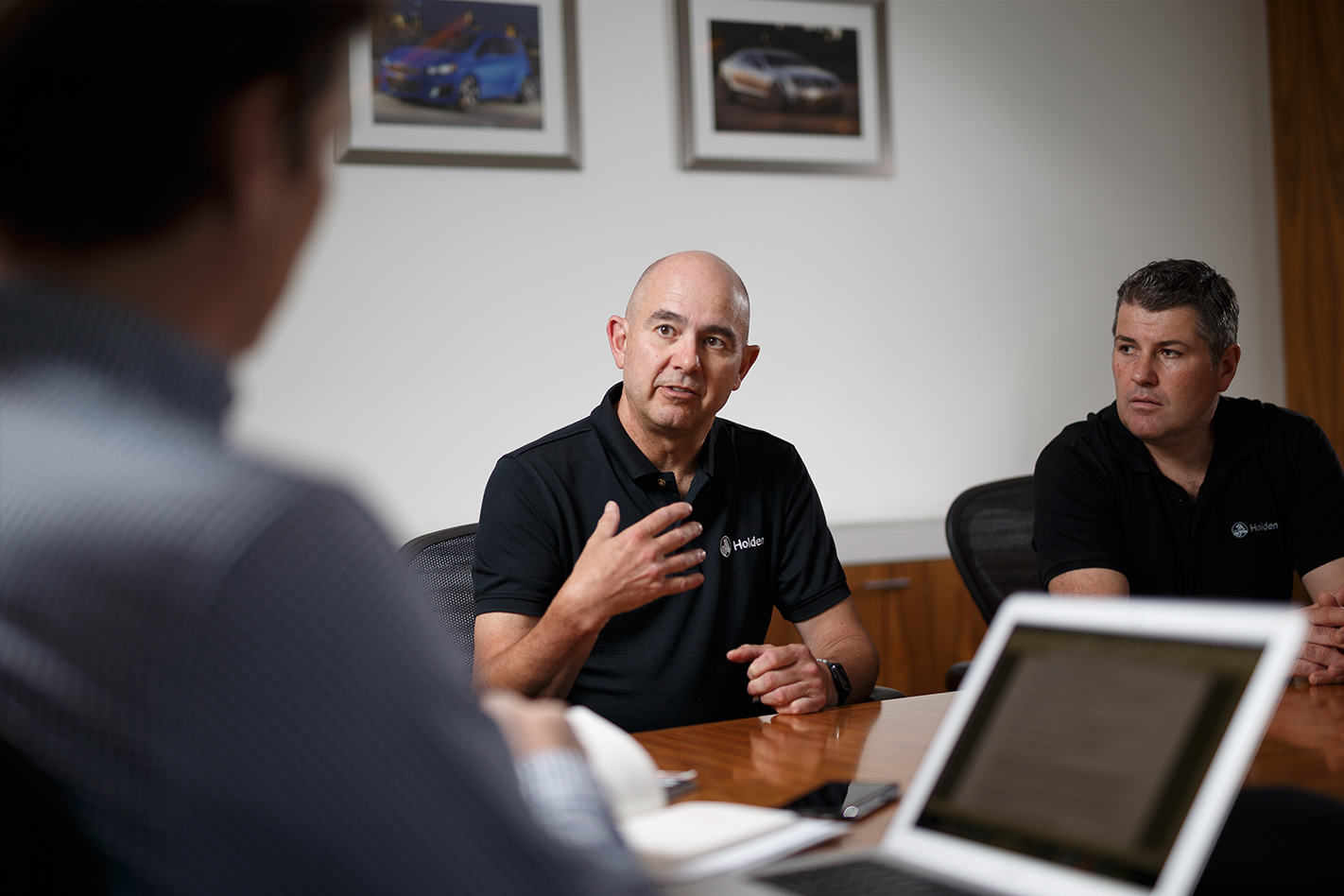
“Being in the wrong gear, having shift busy-ness; they’re the things I was really concerned about. As a nation, we like our transmissions to feel different to other regions. Some regions don’t want the transmission to hang on to a gear ever – they always want to be in the highest available gear,” explains Tassone. “That’s why we have different transmission calibrations for Europe and North America. We also drove exhaust changes. The V6 has a bit more character, a little bit of a bark. We got better flow out of the exhaust for better response and it feels livelier and sounds better.
The VXR’s sound symposer also needed some fairly fundamental re-work, Holden flying in Bose engineers to completely rework the system. “The thing about sound enhancement is that if customers notice it, we’ve done it wrong,” says Johnson. “It’s meant to be subtle. The first thing we did with the European calibration as to tone it right down. The Bose setup sounds like you’re just adjusting the tone control on your stereo. It builds on something that’s already there, like putting a signal through an amplifier and adjusting the tonal levels.
I have to ask about the rumours of a forced induction V6. The engineers are quick to pour cold water on either developing a system in-house or the efficacy of an aftermarket solution.
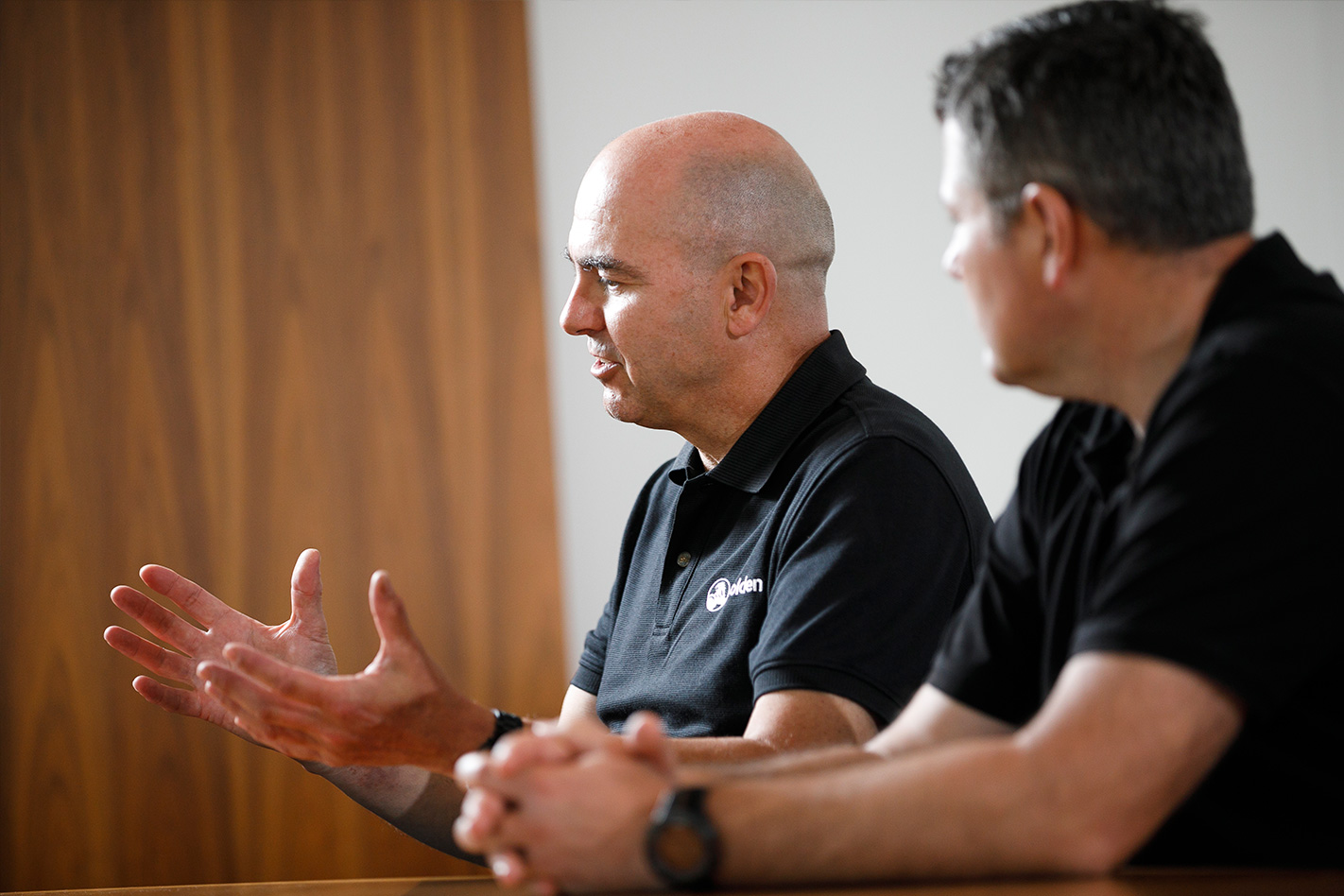
Rob Trubiani – Chassis development
Trubiani’s the man who is the ultimate arbiter of how a Commodore ZB should drive. That’s one heck of a responsibility. “The history of the Commodore isn’t lost on me,” he says. “I wanted to make sure the car delivered what a Holden Commodore should.” A Holden man since he left university, Trubiani’s following a well-worn groove. His father worked for the company for decades prior, so it’s fair to say he’s steeped in the brand values.
But while understanding the requirements were fairly straightforward, achieving those ends proved anything but. “From when you get those cars, the timing is quite tight, so you have to work aggressively,” he says. While the all-wheel drive system offered all manner of options in terms of chassis tuning, it also massively increased the complexity of his task.
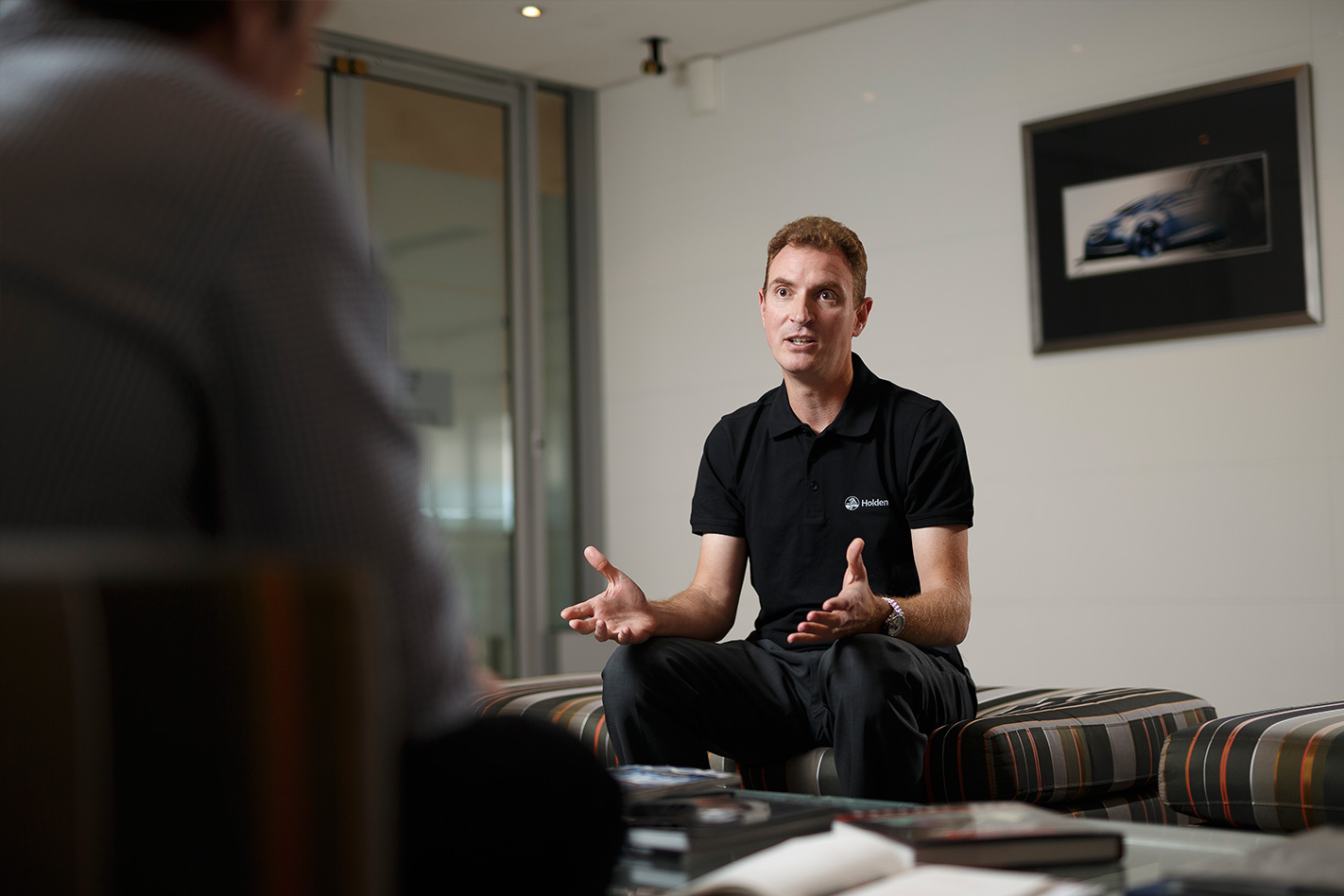
It’s not just the Twinster all-wheel drive system that needed calibration. The permutations of suspension and steering settings saw Lang Lang’s overtime budget take a leathering.
“The cars that are running HiPer strut front suspension run one steering calibration, says Trubiani.“The VXR is unique with three modes; tour, sport and VXR each have their own cals. All of the V6s run one steering cal with a separate sports mode. Then all of the front-wheel drive cars have their own unique steering cal that’s shared with the Country Tourer, the Calais V and the Calais touring wagon because they run a MacPherson strut front suspension system,” he says. The task is clearly huge.
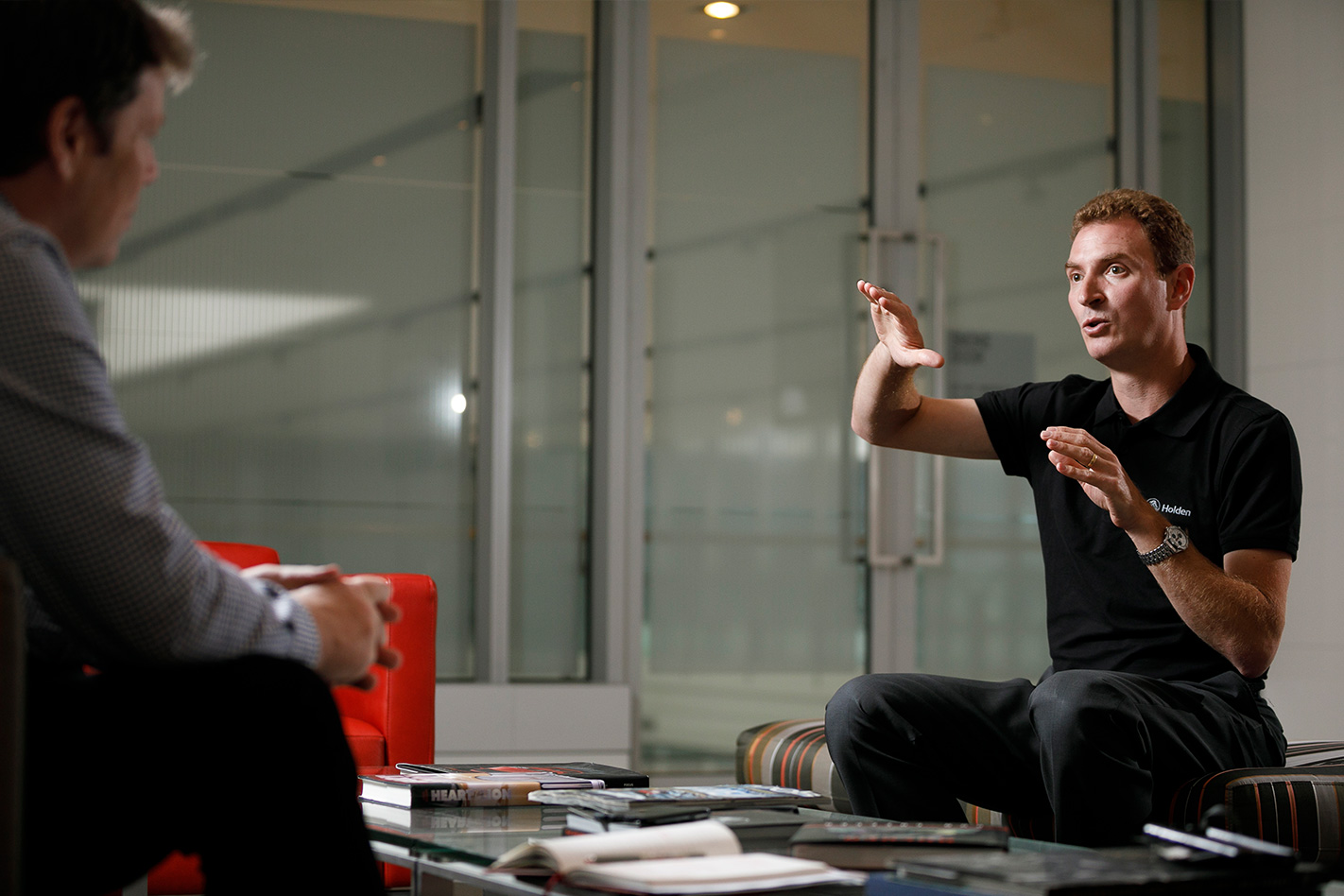
Chris Miles – Marketing
Interviewing any marketing guy usually ends up with a long recording with little of any publishable quality on it. Miles is different. He arrives at the interview in his Commodore VF Motorsport Edition. Good start. Anyone who forks out extra for better brakes and suspension is probably our kind of guy. Like Trubiani, he’s another who followed his father’s footsteps through the gates at Holden.
“I moved into the product marketing role looking after Commodore at the end of 2014, just when things were getting interested in terms of scoping the car, what the model line up is, the specifications, making sure the content was right for our audience across all the different trims,” he says, by way of explanation to his involvement with the ZB project.
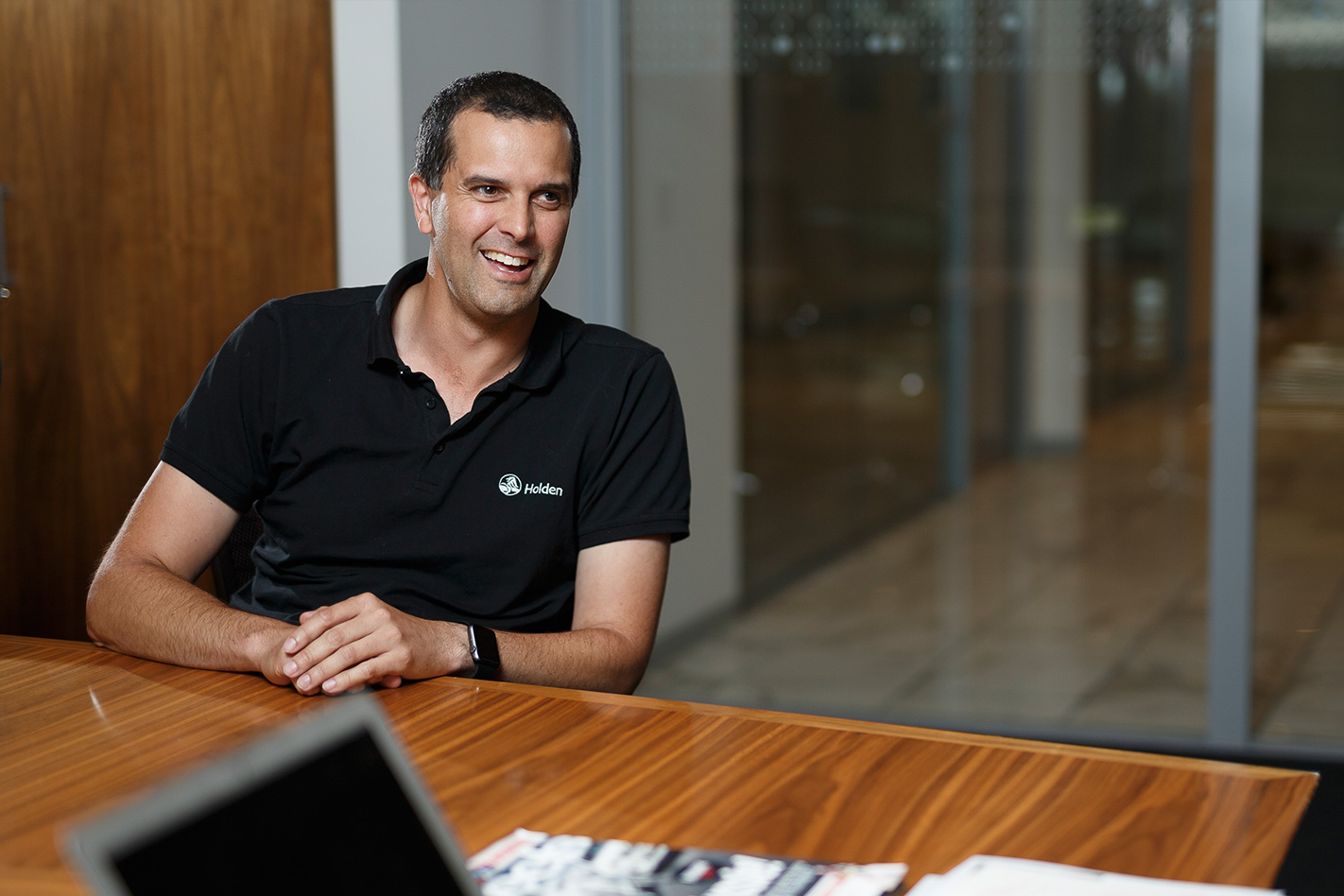
“The Tourer presents us a really good opportunity,” he says, warming to the theme. “In the market, it’s all Subaru Outback. That’s what we’re looking at; people who don’t want an SUV but still want a higher ride height. There’s no diesel AWD in this platform – Opel don’t have it either – so there was no option for this. We don’t have a car that competes with the entry-level Outback, but 60 percent of their volume is their 2.5 Premium and by having our car at $47,990 we’re still a little bit more expensive, but we have a V6 versus a four, 9-speed auto etcetera. Customers will be able to see that,” he says.
He particular likes the chances of the LT entry-level model. “At that price it competes against some medium segment cars. We own the large segment, but the sharp price point gives us a real opportunity to straddle the segments,” he says.
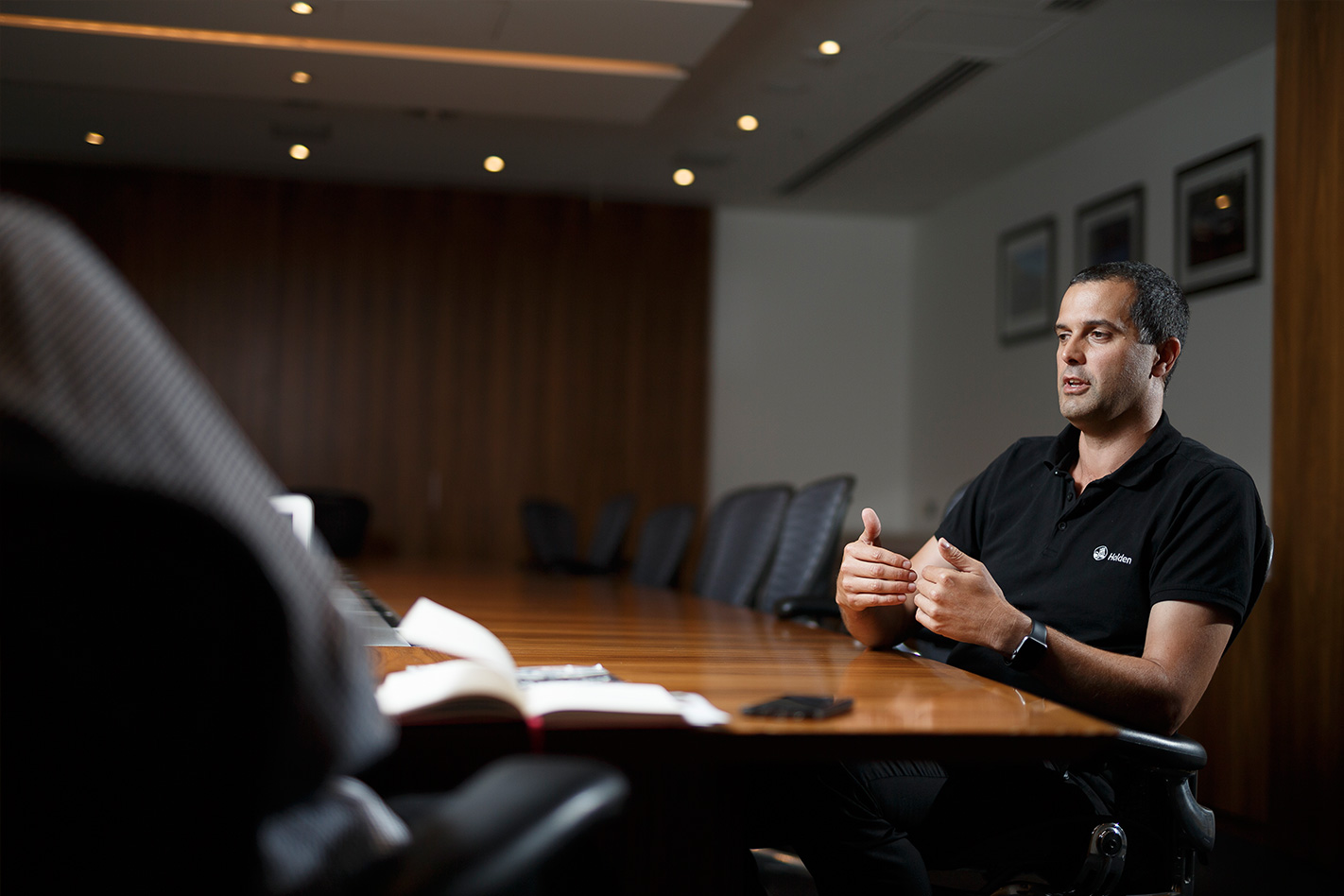
“In the immediate term, we have one diesel engine,’ he says. “There’s a more powerful diesel in Europe but at the moment that’s not on the table. But plans can change. We’ve got one of the youngest portfolios out there, bringing the best cars we possibly can to Australia.”


